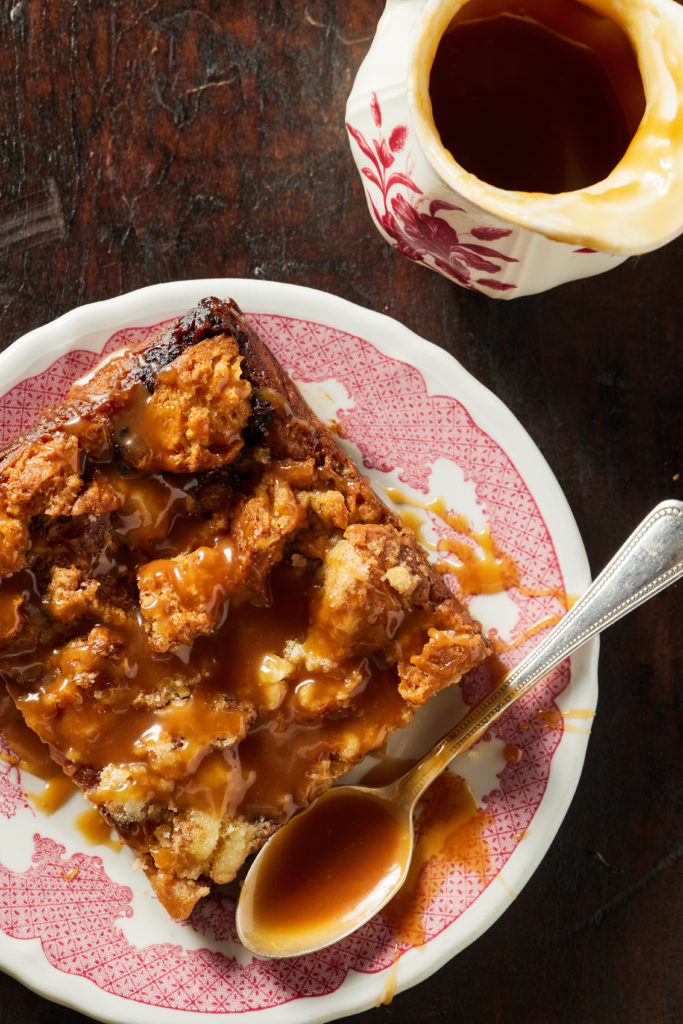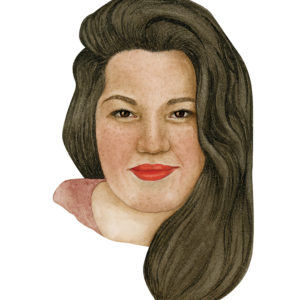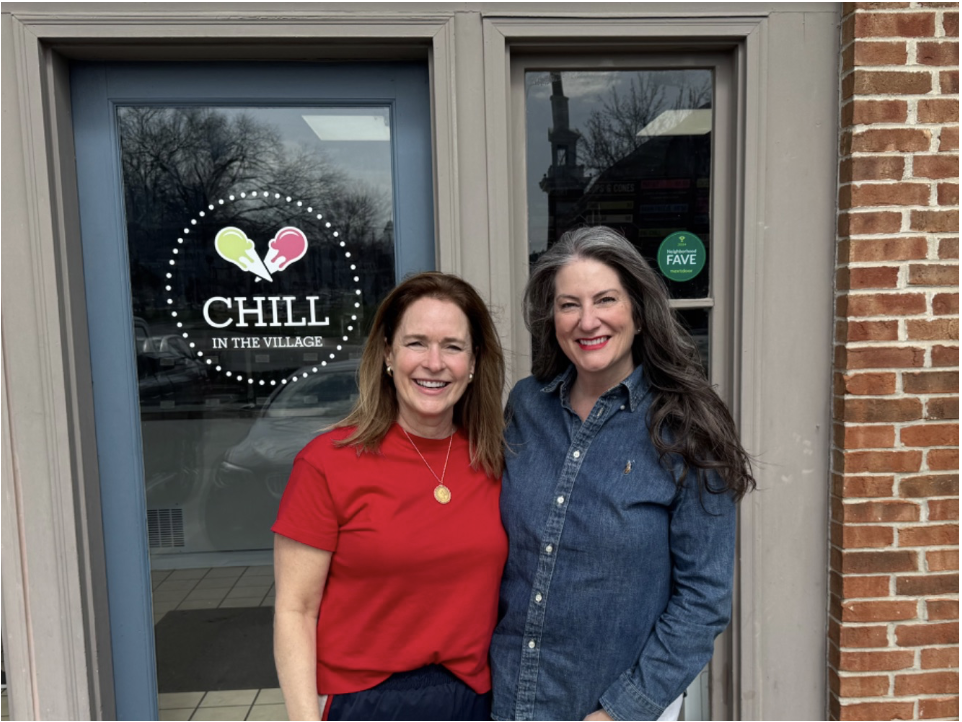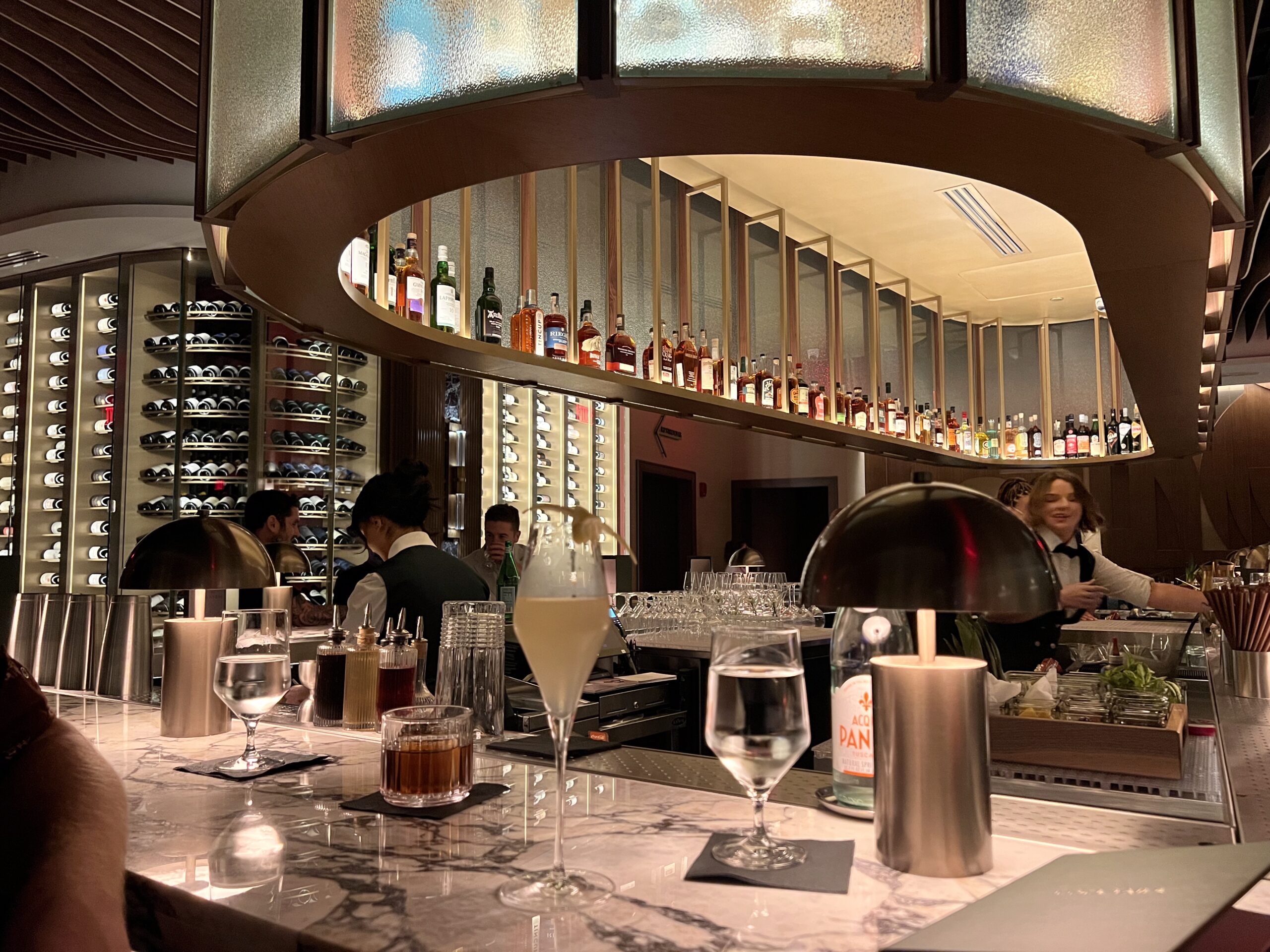Here is a little cafe in Kraków’s Old Town: Its neat tables spill out into the street, waiters in starched aprons bustle about with wine bottles, and dishes that have sold out are crossed off the chalkboard menu. I idled there for an entire afternoon several years ago, sipping coffee and Zubrówka. I can’t remember the name of the place, and I can only remember some of what I ate, but I can recall exactly how I felt—like I had been going there for years.

For many old-style European cafes, the food is nothing revolutionary. The magic is in the indubitable comfort of these spaces: Sitting in one of the well-worn seats, feeling the weight of tarnished antique silver in your hand, leaning across the aisle to knock your glass of wine in a merry salute with your neighbor’s. This is the vibe Tailleur is going for. Heather White and Amante Domingo quietly opened the two-level restaurant across from Transit Coffee in Westport over Labor Day weekend.
Tailleur seems to have materialized out of nowhere, though the road was long. White and Domingo planned it over eighteen months during the pandemic. They painstakingly remodeled the 1928 building, painting the walls a rich naval blue, laying hexagon tile and hanging warm brass chandeliers from the domed ceiling. The decor pays homage to White’s background as an equestrian show jumper: Hunting scene oil paintings hang on the walls, interspersed with gilded mirrors, and the second-floor dining room features handsome Victorian settees and cowhide rugs. The details are precise and intimate down to the black sequined show jacket hanging from a coat hook and the riding boots propped on the stairs, as though Ralph Lauren himself has just arrived home.
I have heard people refer to Tailleur as a French bistro. They take cues from the name, the French spelling of Taylor, the sister restaurant to the Russell on Main and the second of White and Domingo’s culinary children. Folks also nod at Domingo’s menu, which centers on classics like steak frites, mussels and steak tartare. White holds that the restaurant is continental European and the menu will change seasonally. The classics are done well here. Domingo’s food is rustic—and occasionally old-fashioned, but in a way that soothes, like an endearing relative who still decorates with doilies. Domingo is at his best when dealing with large chunks of meat.
The rack of lamb is rubbed in a bounty of garlic and thyme, roasted to a perfect medium-rare and finished with a cheerful demi-glace that accentuates the robust, earthy protein. You will enjoy savoring the last juices from this dish in the polenta cake buried underneath the lamb, but the surprise scene-stealer is the mountain of crispy Brussels sprouts with wispy little leaves that are as snackable as chips. An enormous pork shank is braised slowly in bold red wines that you would be proud to serve at a dinner party, and you hardly need a fork to separate it from the bone—one stern look will do.
Either of these entrees is an excellent backup choice if the kitchen has run out of the duck. Here, where you might expect duck a l’orange, Domingo delivers a pan-seared duck breast confit that he has glazed in a pomegranate and lavender reduction. It checks every box: crackling skin that could peel itself from the soft pink meat, a balance of sweet and tart against the lusty fat of the duck, a filling pool of lentils and sweet potato chunks that prolong those flavors.
The salmon filet would benefit from more salt, but it has a wonderfully crispy exterior and flakes beautifully, revealing peachy flesh that has been precisely cooked. The mussels marinières are an indulgence. There is nothing secret about the sauce—it is the standard white wine, butter and garlic, plus a spice rack of dried herbs—but it is a good example of the honest, time-tested cooking that Tailleur leans on. Order a side of the house baguette, some of the softest and squishiest I’ve seen, and make sure you sponge up every drop of that golden broth.

Likewise, the steak tartare is exactly what you want it to be, beef tenderloin tumbled with capers and Dijon mustard and finished with a chicken yolk and a crispy onion ring. It looks as though it has been transported from the Gallic countryside onto your table.
“You’ll never see foam or anything gastro on anything we do,” White says, “and there is no can-opening here. It’s important that things are highlighted through their natural element.
”Occasionally, Domingo’s plating turns from sentimental to disappointingly dated. I take umbrage with most garnishes that are purely decorative, and more than half the plates I ordered arrived with a fat square of purple radicchio somewhere or a sprig of thyme or rosemary. The risotto was the worst offender: In addition to the inexplicable radicchio, the rice—mixed with pleasing chunks of lobster and served with good-sized seared scallops—was covered in heaping handfuls of undressed arugula. By the end of each meal at Tailleur, I felt like I had wasted an entire salad.
There are other gripes. The bun on the burger was not quite right—it crumbled in my hands. The frites, which should have been an easy win, were pale and lackluster. And when the shrimp cocktail arrived, it was with the cocktail sauce smeared on the plate (next to thyme) and the shrimp themselves packed into a goblet (with radicchio).
If you are willing to overlook these small sins, Tailleur is well worth the advance planning needed for securing a reservation (just a month after opening, and without an online booking system, it’s near impossible to get in on a Friday or Saturday without a week’s notice). In true bistro fashion, portions are generous and prices are moderate (entrees run $15–$31). And White, who runs the dessert program, makes sure things end on a high note.

The carrot cake has twenty-four ingredients—no raisins, though—and is finished with an irresistibly tangy cream cheese frosting. I savored each spoonful of chocolate pot de crème and wondered how it could be that the warm bread pudding, made from custard-soaked bread from yesterday and covered in maple syrup, disappeared so quickly.
There is no need to agonize over your dessert choices: Select three for twenty dollars and have all the cake you want. (Skip the flourless chocolate torte.)
Soon, Tailleur will round out its fine wine list with tableside cocktail service. Servers will wheel an antique drink cart from table to table, hand-crafting cocktails to order. (There is no bar and therefore no bartender.) White plans to introduce a monthly high tea service, complete with froufrou pastries served on special-occasion china. And that divine pot de crème will transition into a communal chocolate pudding: In a move lifted from one of her favorite restaurants in her hometown of Vancouver, White wants to stroll through the dining room spooning out celebratory gobs of mousse while guests enjoy a post-dinner coffee.
European cafes never go out of style. Part of their charm is that they were never trying to be stylish in the first place.






